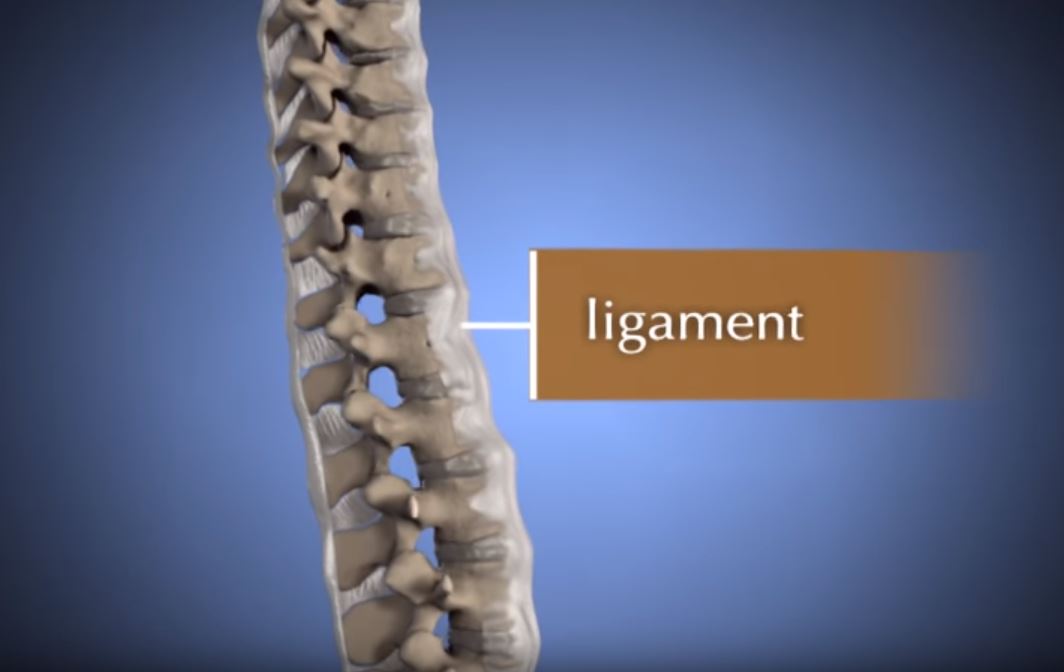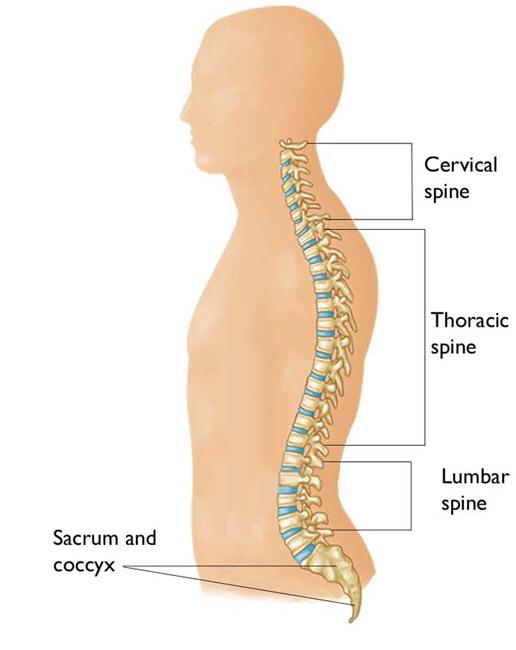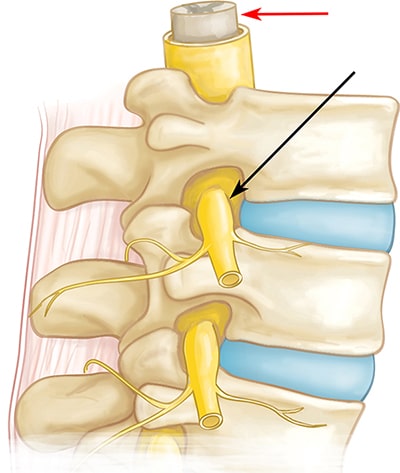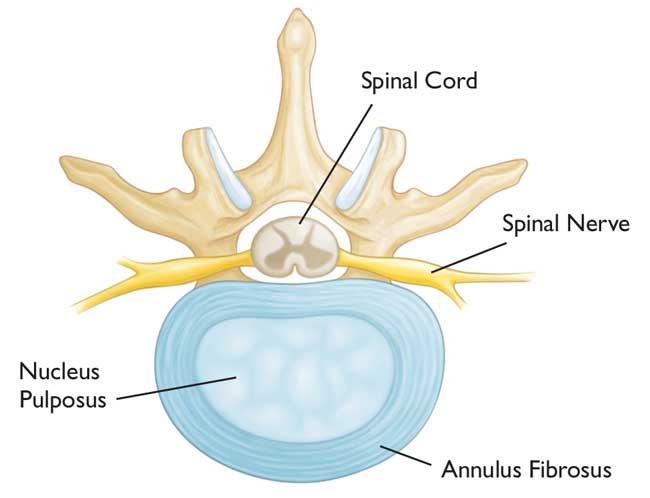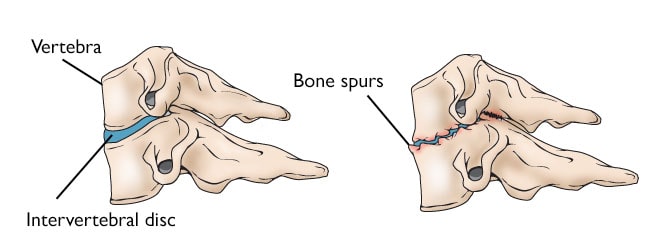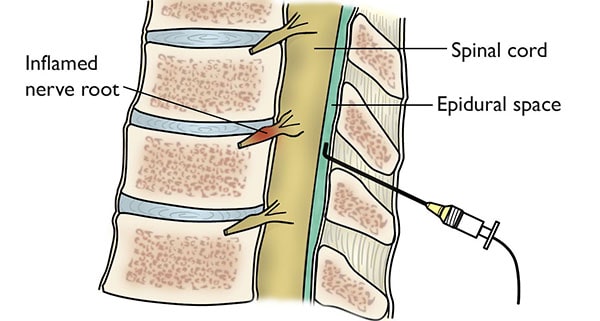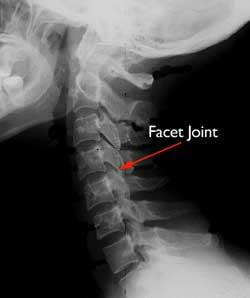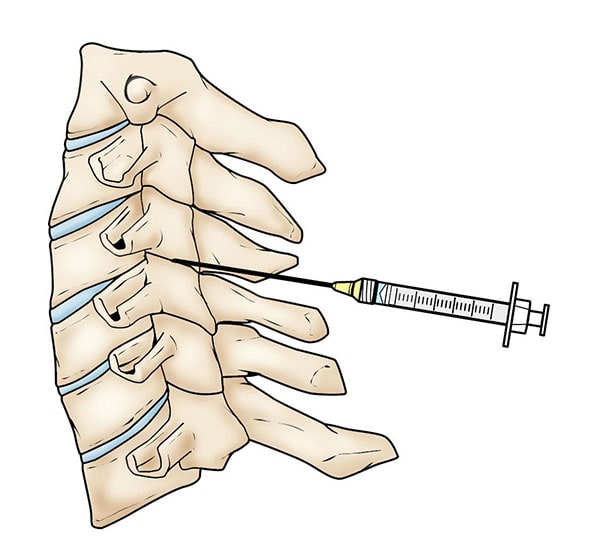Diseases & Conditions
Cervical Spondylosis (Arthritis of the Neck)
Neck pain can be caused by many things — but it is most often related to getting older. Like the rest of the body, the disks and joints in the neck (cervical spine) slowly degenerate as we age. Cervical spondylosis, commonly called arthritis of the neck, is the medical term for these age-related, wear-and-tear changes that occur over time.
Cervical spondylosis is extremely common. More than 85% of people over the age of 60 are affected. The condition most often causes pain and stiffness in the neck — although many people with cervical spondylosis experience no noticeable symptoms.
In most cases, cervical spondylosis responds well to conservative treatment that includes medication and physical therapy.
Anatomy
Your spine is made up of 24 bones, called vertebrae, that are stacked on top of one another. These bones connect to create a canal that protects the spinal cord.
The seven small vertebrae that begin at the base of the skull and form the neck form the cervical spine.
Other parts of your spine include:
Spinal cord and nerves. These electrical cables travel through the spinal canal carrying messages between your brain and muscles. Nerve roots branch out from the spinal cord through openings in the vertebrae.
Intervertebral disks. In between your vertebrae are flexible intervertebral disks. They act as shock absorbers when you walk or run.
Intervertebral disks are flat and round and about a half inch thick. They are made up of two components:
- Annulus fibrosus. This is the tough, flexible outer ring of the disk.
- Nucleus pulposus. This is the soft, jelly-like center of the disk.
Cause
Cervical spondylosis arises from degenerative changes that occur in the spine as we age. These changes are normal and they occur in everyone. In fact, nearly half of all people middle-aged and older have worn disks that do not cause painful symptoms.
Disk Degeneration and Bone Spurs
As the disks in the spine age, they lose height and begin to bulge. They also lose water content, begin to dry out and weaken. This problem causes settling, or collapse, of the disk spaces and loss of disk space height. Eventually, the cushioning qualities of the disks begin to decrease.
As the facet joints experience increased pressure, they also begin to degenerate and develop arthritis, similar to what may occur in a hip or knee joint. The smooth, slippery articular cartilage that covers and protects the joints wears away.
If the cartilage wears away completely, it can result in bone rubbing on bone. To make up for the lost cartilage, your body may respond by growing new bone in your facet joints to help support the vertebrae.
Over time, these bone overgrowths — called bone spurs — may narrow the space for the nerves and spinal cord to pass through (stenosis). Bone spurs may also lead to decreased range of motion in the spine.
Risk Factors
Age is the most common risk factor for cervical spondylosis. The condition is extremely common in patients who are middle-aged and older.
Other factors that may increase your risk for developing cervical spondylosis and neck pain include:
- Genetics — a family history of neck pain and spondylosis
- Smoking — clearly linked to increased neck pain
- Occupation — jobs with lots of repetitive neck motion and overhead work
- Depression or anxiety
- Previous injury or trauma to the neck
Symptoms
For most people, cervical spondylosis causes no symptoms. When symptoms do occur, they typically include pain and stiffness in the neck. This pain:
- Can range from mild to severe
- Is sometimes worsened by looking up or looking down for a long time, or by activities in which the neck is held in the same position for a prolonged period of time — such as driving or reading a book
- Usually improves with rest or lying down
Other symptoms may include:
- Headaches
- Grinding or popping noise or sensation when you turn your neck
- In some cases, cervical spondylosis results in a narrowing of the space needed for the spinal cord or nerve roots. If this occurs, your symptoms may include numbness and weakness in the arms, hands, and fingers
- Trouble walking, loss of balance, or weakness in the hands or legs
- Muscle spasms in the neck and shoulders
Doctor Examination
Physical Examination
After discussing your medical history and general health, your doctor will conduct a thorough examination of your neck, shoulders, arms and, frequently, your legs. They will conduct a number of tests, looking for problems or changes in:
- Strength in your arms, hands, and fingers
- Touch sensation
- Reflexes
- Blood flow
- Flexibility in your neck and arms
- Gait (the way you walk)
Your doctor may also gently press on your neck and shoulders — feeling for trigger (tender) points or swollen glands. They will also ask questions to understand more about your symptoms and any injuries that may have occurred to your neck. These questions may include:
- When did the pain start?
- When does the pain occur? Is it continuous or does it come and go?
- Do certain activities make the pain worse?
- Have you ever had pain before?
- Have you ever been treated for pain?
- Do you have any weakness or numbness in your arms or legs?
- Do you have difficulty with fine motor skills, such as handwriting or buttoning your shirt?
- Do you have loss of balance or other coordination problems?
- Were you ever involved in an accident or had an injury to your neck?
Tests
Your doctor may order diagnostic tests to help confirm the diagnosis of cervical spondylosis. These tests may include:
X-rays. X-rays provide images of dense structures, such as bone. An X-ray will show the alignment of the bones along your neck. It can also reveal degenerative changes in your cervical spine — such as the loss of disk height or the presence of bone spurs.
Magnetic resonance imaging (MRI) scans. MRI scans show the body's soft tissues, such as muscles, disks, nerves, and the spinal cord. An MRI can help determine whether your symptoms are caused by damage to soft tissues, such as a bulging or herniated disk.
Computerized tomography (CT) scans. More detailed than a plain X-ray, a CT scan can help your doctor better view your spinal canal and any bone spurs.
Myelogram. In this imaging procedure, contrast dye is injected into the spinal canal to make the spinal cord and nerve roots show up more clearly. A CT scan is usually done immediately after the myelogram while the contrast dye is still in the spinal canal.
Electrodiagnostic testing. Electromyography (EMG) measures the electrical impulses of the muscles at rest and during contractions. Nerve conduction studies are often done along with EMG to determine if a spinal nerve is functioning properly. Learn more: Electrodiagnostic Testing
Other tests. In some cases, your doctor may order a blood test to determine whether a rheumatoid factor — or any other antibody indicative of an inflammatory arthritis — is present.
Treatment
Nonsurgical Treatment
In most cases, treatment for cervical spondylosis is nonsurgical. Nonsurgical treatment options include:
Physical therapy. Physical therapy is usually the first nonsurgical treatment that your doctor will recommend.
- Specific exercises can help relieve pain, as well as strengthen and stretch weakened or strained muscles.
- In some cases, physical therapy may include posture therapy or the use of traction to gently stretch the joints and muscles of your neck.
Physical therapy programs vary in length, but generally last from 6 to 8 weeks. Typically, sessions are scheduled 2 to 3 times per week.
Medications. During the first phase of treatment, your doctor may prescribe several medications to be used together to address both pain and inflammation.
- Acetaminophen. Mild pain is often relieved with acetaminophen.
- Nonsteroidal anti-inflammatory drugs (NSAIDs). Often prescribed with acetaminophen, NSAIDs such as aspirin, ibuprofen, and naproxen are considered first-line medications for neck pain. They relieve both pain and swelling and may be prescribed for a number of weeks, depending on your specific symptoms. Other types of pain medication can be considered if you cannot take NSAIDs for medical reasons (such as heart, liver, or kidney disease) or if your pain is not well controlled.
- Oral corticosteroids. A short course of oral corticosteroids can help relieve pain by reducing inflammation.
- Muscle relaxants. Medications such as cyclobenzaprine or carisoprodol can be used to treat painful muscle spasms.
Soft cervical collar. This is a padded ring that wraps around the neck and is held in place with Velcro. Your doctor may advise you to wear a soft cervical collar to limit neck motion and allow the muscles in your neck to rest. A soft collar should only be worn for a short period of time since long-term wear may decrease the strength of the muscles in your neck.
Ice, heat, and other modalities. Your doctor may recommend careful use of ice, heat, massage, and other local therapies to help relieve symptoms.
Steroid-based injections. Many patients find short-term pain relief from steroid injections. The most common procedures for neck pain include:
- Cervical epidural block. In this procedure, a combination of steroid and anesthetic medicine is injected into the space next to the covering of the spinal cord (epidural space). This procedure is typically used for neck and/or arm pain that may be due to a cervical disk herniation, also known as radiculopathy or a pinched nerve.
- Cervical facet joint block. In this procedure, a combination of steroid and anesthetic medicine is injected into the capsule of the facet joint. The facet joints are located in the back of the neck and provide stability and movement. These joints can develop arthritic changes that may contribute to neck pain.
- Medial branch block and radiofrequency ablation. This procedure is used in some cases of chronic neck pain. It can be used to both diagnose and treat a painful joint. During the diagnosis portion of the procedure, the nerve that supplies the facet joint is blocked with a local anesthetic. If your pain is relieved, your doctor may have pinpointed the source of your neck pain. The next step option may be to block the pain more permanently. This is done by damaging the nerves that supply the joint with a burning technique — a procedure called radiofrequency ablation. Pain relief from an ablation typically lasts for several months. However, if the nerve regenerates (heals), pain can return.
Although less invasive than surgery, steroid-based injections are prescribed only after a complete evaluation by your doctor. Your doctor will talk with you about the risks and benefits of steroid-based injections for your specific condition.
Surgical Treatment
Surgery is not commonly recommended for cervical spondylosis and neck pain unless your doctor determines that:
- A spinal nerve is being pinched by a herniated disk or bone (cervical radiculopathy), or
- Your spinal cord is being compressed (cervical spondylotic myelopathy)
Patients who have progressive neurological symptoms, such as arm weakness, numbness, unsteadiness while walking, or falling, are more likely to be helped by surgery.
Sometimes, surgery may be recommended if you have severe neck pain (without nerve compression) that has not been relieved by nonsurgical treatment. However, some patients with severe neck pain will not be candidates for surgery. This may be due to:
- The widespread nature of their arthritis
- Other medical problems, or
- Other causes of their pain that cannot be treated with surgery, such as fibromyalgia
Contributed and/or Updated by
Peer-Reviewed by
AAOS does not endorse any treatments, procedures, products, or physicians referenced herein. This information is provided as an educational service and is not intended to serve as medical advice. Anyone seeking specific orthopaedic advice or assistance should consult his or her orthopaedic surgeon, or locate one in your area through the AAOS Find an Orthopaedist program on this website.







